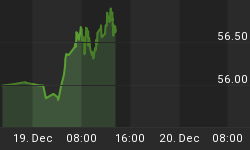The British Pound may be just on the verge of beginning a sizeable decline, and we have been talking with subscribers about when and how to recognize that a downward trend has truly begun. This article includes some essential points for those seeking a shorting opportunity.
The British Pound has been working through a corrective pattern since late 2007. The dramatic down-move in 2007-2008 counts well as a five-wave move, which we label as A, and it has been followed by a lengthy period of consolidation which we consider the B-wave. On the monthly time frame, the B-wave may be complete, since it has moved tested the area near two important log-term targets -- one Fibonacci-related at 1.6887 and another corresponding to the 2009 high at 1.6991.

The weekly chart shows how price has behaved after testing the area mentioned above. We see it is starting to breach the supporting channel boundary. For a trader, the next crucial step is to determine whether that breach represents merely a brief poke below the line or a meaningful loss of support.

From this point forward, traders should mainly follow a daily chart such as the one shown below. If price is getting ready to move downward in a powerful wave 'iii' of (iii) of 'C', then there are two scenarios to watch for, as represented by the blue and red paths drawn on the daily chart below. At our website, we offer some considerations for determining which path is working and how to trade it.
















